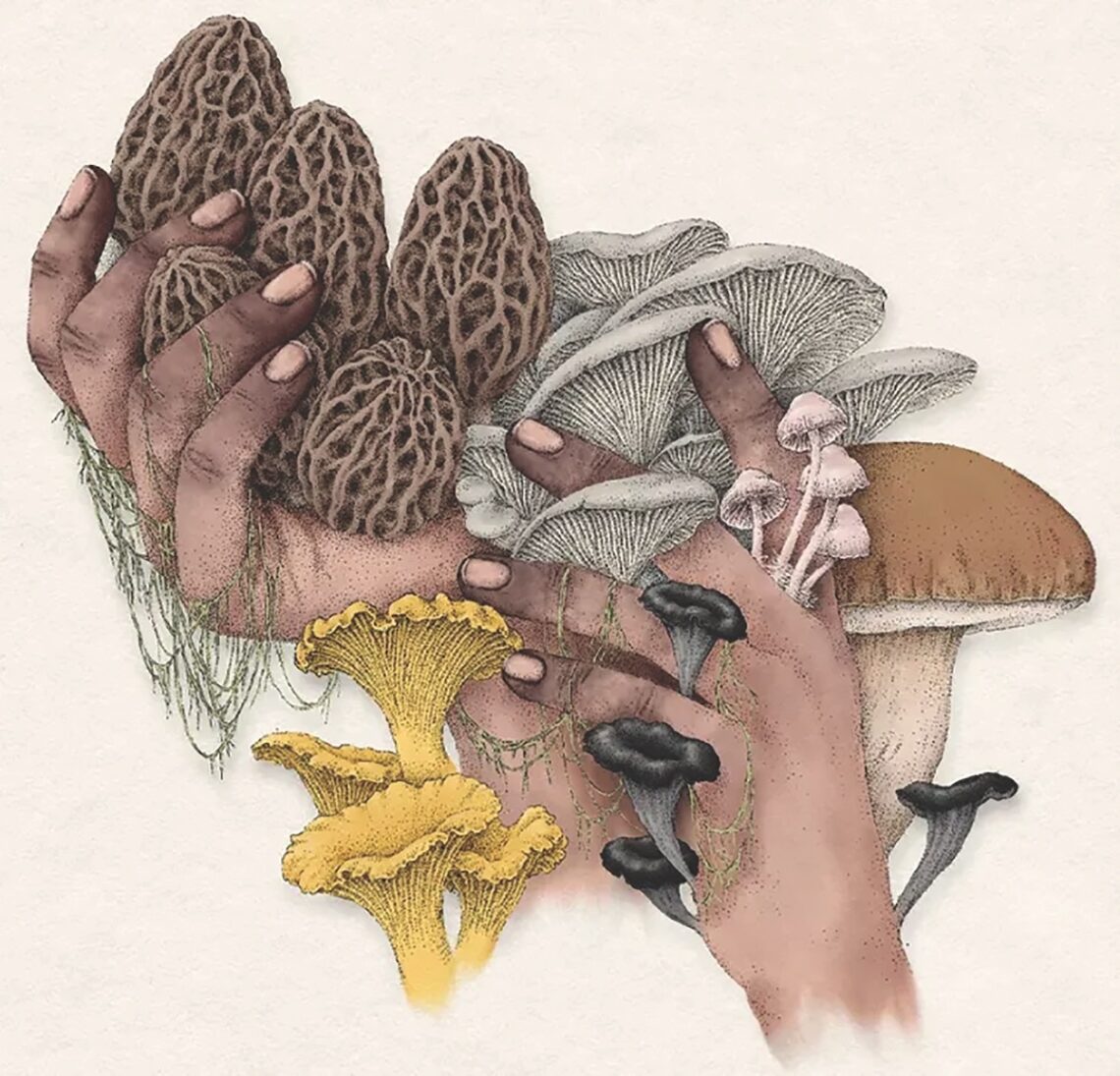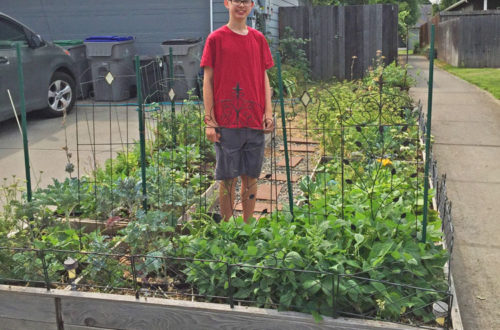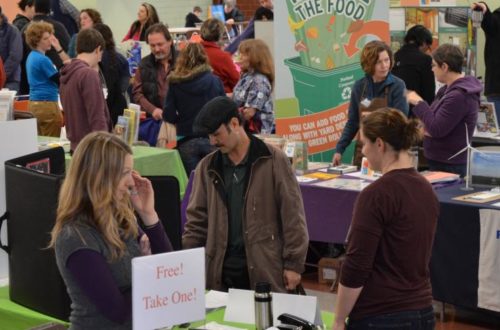There is a whole world of gorgeous foraged fungi varieties beyond what’s common in U.S. grocery stores.
Woven into the underside of the topsoil and throughout rotting logs runs a thready, glistening, white meshwork of mycelium. These skeins make up a robust and expeditious network that balances entire ecosystems by transporting nutrients across distances short and vast. When the life of a tree or a plant, or a bug ends, the mycelium breaks down and absorbs the organic matter left behind.
Emerging from mycelia is the above-ground fruiting body we call a mushroom. More than 14,000 different types of fungi live among us. Some are edible, others are medicinal, many are toxic, and certain ones represent sacred symbols to Indigenous cultures globally.
In a Western society in the U.S., most of us know mushrooms as Cremini buttons or Portobello platters enclosed in plastic wrap from the supermarket. But there is a whole other world of gorgeous foraged fungi varieties.
Indigenous knowledge keepers encourage us to harvest mushrooms with all of our senses and with great caution. “I teach my children that there are two identical mushrooms in the forest they will be hunting—one is edible, and one is poisonous,” says Meagan Baldy of the Hoopa Valley Tribe. Together, the food preservation specialist and her kids search for Black Trumpets and Chanterelles— and their imposters. “I study the differences with them.”
Timing is critical and varies by geography, so learn to anticipate when they might appear in your area.
Some mushrooms can show up on a rainy fall day or right before a freeze. In the Pacific Northwest, Morels, Oysters, and Boletes visit us for just a few fleeting weeks in the springtime, doing the busy work of transitioning the world from the ending of winter into the promise of spring, a season of new life.
When the conditions are right, mushrooms can crop up rapidly overnight and can be gone promptly in days or hours as the weather shifts. Martin Reinhardt (Anishinaabe Ojibway), professor of Native American Studies at Northern Michigan University, shares that in the Anishinaabemowin language, the term for mushroom is “papowii,” which means “to swell up in stature suddenly and silently from an unseen source of power.”
That power could be the expression of collective energy derived from the memorialization of a seemingly ended life. Humans can find the same energy transfer from the Ancestors. Reinhardt connects these commonalities as he remembers harvesting Morels with his late father. They’d carefully clean them before panfrying the mushrooms in butter with salt and pepper. Reinhardt still goes out in search of Indigenous Oysters, Chanterelles, and Boletes, but he says he just doesn’t spot Morels like his dad did. “I always enjoyed the taste of fresh Morel mushrooms, but I think I enjoyed the time I spent with my dad even more.”
Harvesting mushrooms endows us with memories and connects us with a powerful source of new life. Demonstrate respect for the fungi by foraging with intention. Walk lightly on the ground to minimize your impact on the mycelium beneath the soil. Be certain that you are harvesting the right species. Cut the stem at an angle and cover the remainder with leaves, like you are tucking it in. This way, the fruiting body can return without becoming diseased, and you can make it look as if you were never there.
MUSHROOM BROTH RECIPE
Clean: Meagan Baldy recommends brushing the duff off of harvested mushrooms immediately and storing them in a paper bag. Just before using them, wipe off any remaining dirt with a clean cloth.
Dry: Baldy then dehydrates the mushrooms for 8 hours (or longer if they need extra drying time). This process helps amplify the earthy flavor and the medicinal benefits.
Cook: Add a few of these dried mushrooms during the cooking process of broth-based dishes, like soups, casseroles, or even rice while it’s steaming, to make an instant broth and deepen the flavor and nutrition of any dish.
Valerie Segrest (Muckleshoot) is a nutrition educator who specializes in local and traditional foods. She is co-founder and director of projects at Tahoma Peak Solutions LLC.
This article originally appeared in the Spring 2023 issue of Yes Magazine and is reprinted here with permission under their Creative Commons license.
Read the original article here: www.yesmagazine.org/issue/endings/2023/02/27/fruits-of-decay
Illustration by Pola Heredia for YES! Media






